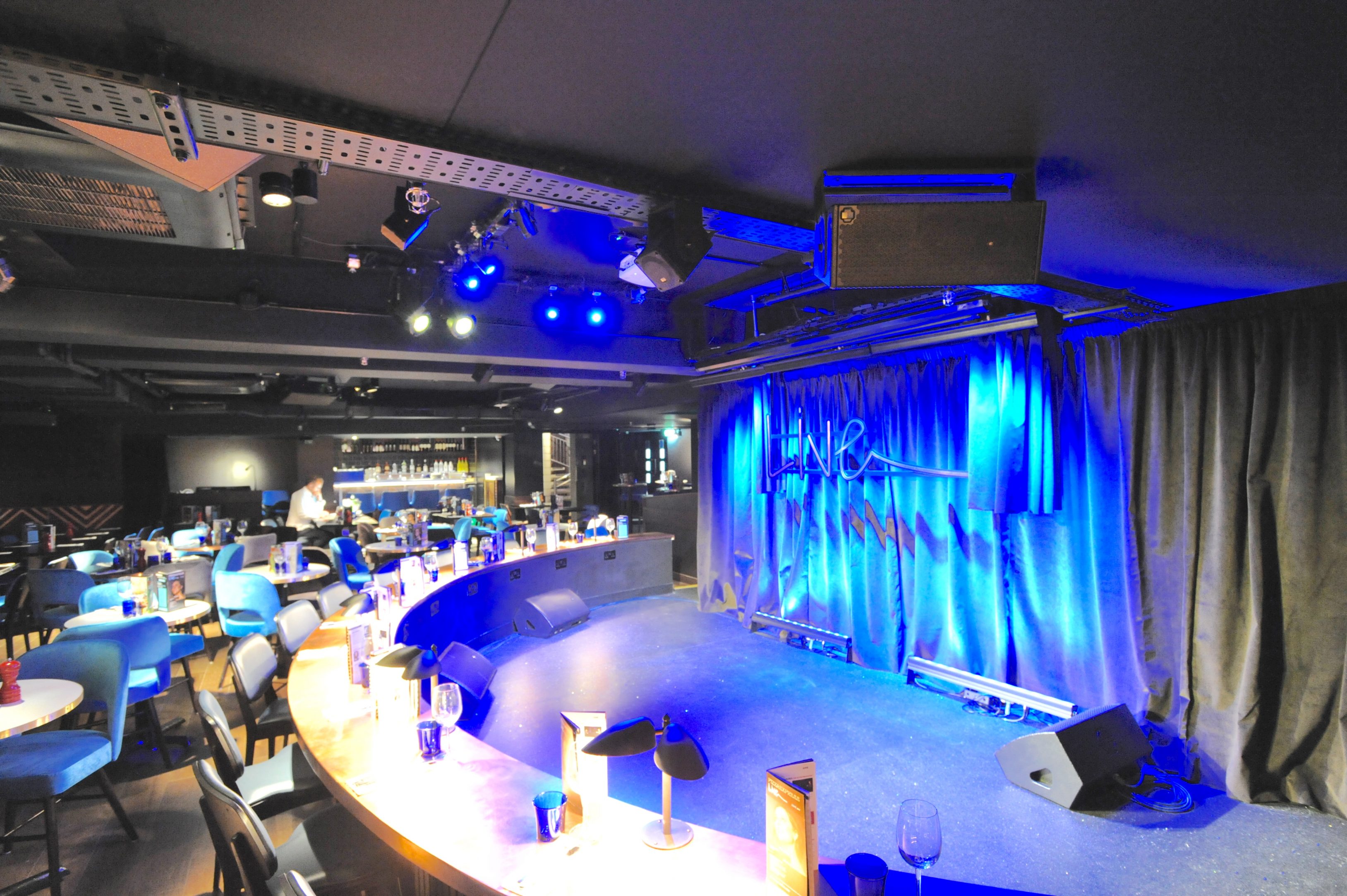
Live music was a cornerstone of the experience in the original PizzaExpress restaurant, and the concept has been rolled out in many PizzaExpress Live venues. We report on the fifth and latest such eatery to have a permanent sound system installed.
Presenting over 2,000 shows annually, more than 20 PizzaExpress Live restaurants now host regular music every Thursday, from Abbey Road to Manchester. Building on the reputation of its flagship venue in Soho’s Dean Street, the expansion of live music at PizzaExpress locations continues to realise the vision of founder Peter Boizo, a jazz lover who constantly sought ways to include music in his restaurants.
Many artists of international calibre have graced their stages over the years, including Gregory Porter, Amy Winehouse, Bill Wyman, Jamie Cullum, Brian May, Rick Wakeman, Van Morrison, Diana Krall, Larry Carlton, George Shearing and many more. Their latest location at 99 High Holborn in central London – the fifth PizzaExpress Live location to feature a permanently installed audio system – has recently been the subject of a complete audio infrastructure design and build project by Autograph Sales & Installations.
The 130-cover venue is designed to be multi-purpose and capable of hosting corporate events, comedy and celebrity roadshows as well as live music. This, plus the size and shape of the room determined that Autograph’s Adam Broom recommended and designed a distributed audio system using mainly Meyer Sound low-voltage components via its proprietary ‘Intelligent DC’ designs.
Discreet components
Broom takes up the story: “At High Holborn the audio design had to satisfy a number of key requirements – it’s a handsome but not huge room so we needed loudspeaker components that would be discreet and not interrupt sight lines. It is a basement space with a hotel immediately above, so we also needed to find a way of delivering suitable SPLs for the various uses throughout the room without excessive leakage; a distributed system was by far the best way to do this.”
“The FOH system includes two Meyer Sound UPJuniors (providing main system left and right), five UPM-1XPs (as centre outfills and two of the delay locations), three UP4-XPs (being the other three delays) and five MM4-XPs used as near-field fills on the stage lip, specifically for the front tables, which are actually behind the main system. All of these units derive their power and signal from two MPS-488HP units, while the only 230V-powered speakers are a pair of UMS-1P subwoofers built into the fabric of the building off to each side of the stage.”
He continues: “The design meant we dealt with some lengthy cable runs but Meyer’s Intelligent DC design made this much easier and neater. All the individual loudspeakers are delayed to centre stage so that their performance characteristics remain constant throughout the space and we’ve also managed to retain a reasonable stereo image throughout. We used a QSC Q-SYS Core 110f processor for central control and it handles all the necessary timing offsets, matrix levels and a little EQ. It’s a single-mode system so really it was a set-and-forget deal here, without any user interface, though that is perfectly possible if we needed to add modes or some degree of user control in future.
“The Yamaha TF3 console is fitted with an NY64 Dante card and supplied with two Yamaha Tio1608D stageboxes giving a total of 32 system inputs available from stage – the main system outputs are also taken from the Tio unit and connected to the analogue inputs of the Core 110f. We also supplied four EM Acoustics M10 floor wedges for onstage monitoring, powered and processed by two Lab.gruppen IPD 2400 DSP-equipped amplifiers. We used some EQ, lo-pass and limiting functions within them to control the M10s as they are very punchy! We also supplied a selection of industry-standard Shure microphones that every visiting performer will recognise.”
Testing, testing
Broom concludes: “Unusually, it was necessary to organise a real-world test of the space, principally for the extensive acoustic treatment of the ceiling – this was so worthwhile as it not only virtually eliminates any leakage but also greatly improves the acoustic response of the room, which contributes to the final performance of the system. PizzaExpress provided a live band who came and played at the anticipated volume via a PA system supplied by us, so we could accurately assess what acoustic treatment was needed to avoid upsetting the hotel guests above… unusual but very effective!”
PizzaExpress’ music manager Ross Dines comments: “Following the sound system installation at our Dean Street location we were very comfortable with Meyer Sound products and knew that Autograph would do whatever it took to make this new venue as good as it can be. We did go through the process of evaluating other products and systems, but once Adam had run a demo for us here it was clear that Meyer Sound was the only choice for us.”
He concludes: “The design that Adam has implemented for us delivers seamless intelligibility to every corner of the room regardless of what type of act we are presenting. More importantly, it plays a critical role in delivering the quality of customer experience that is at the heart of the PizzaExpress Live concept.”
www.autographsales.co.uk
www.bssaudio.com
www.emacoustics.com
www.labgruppen.com
www.meyersound.com
www.qsc.com
www.shure.com
www.yamahaproaudio.com







